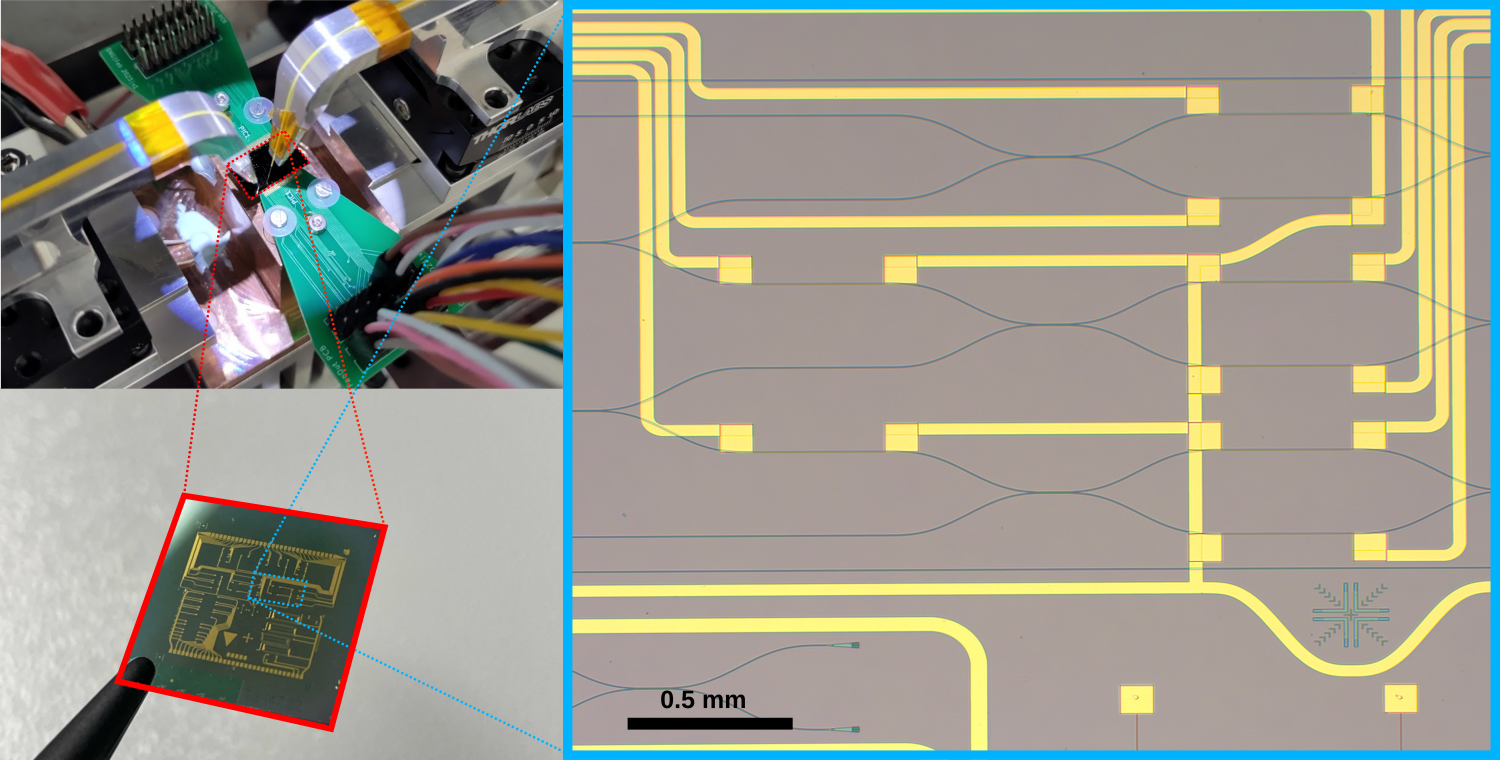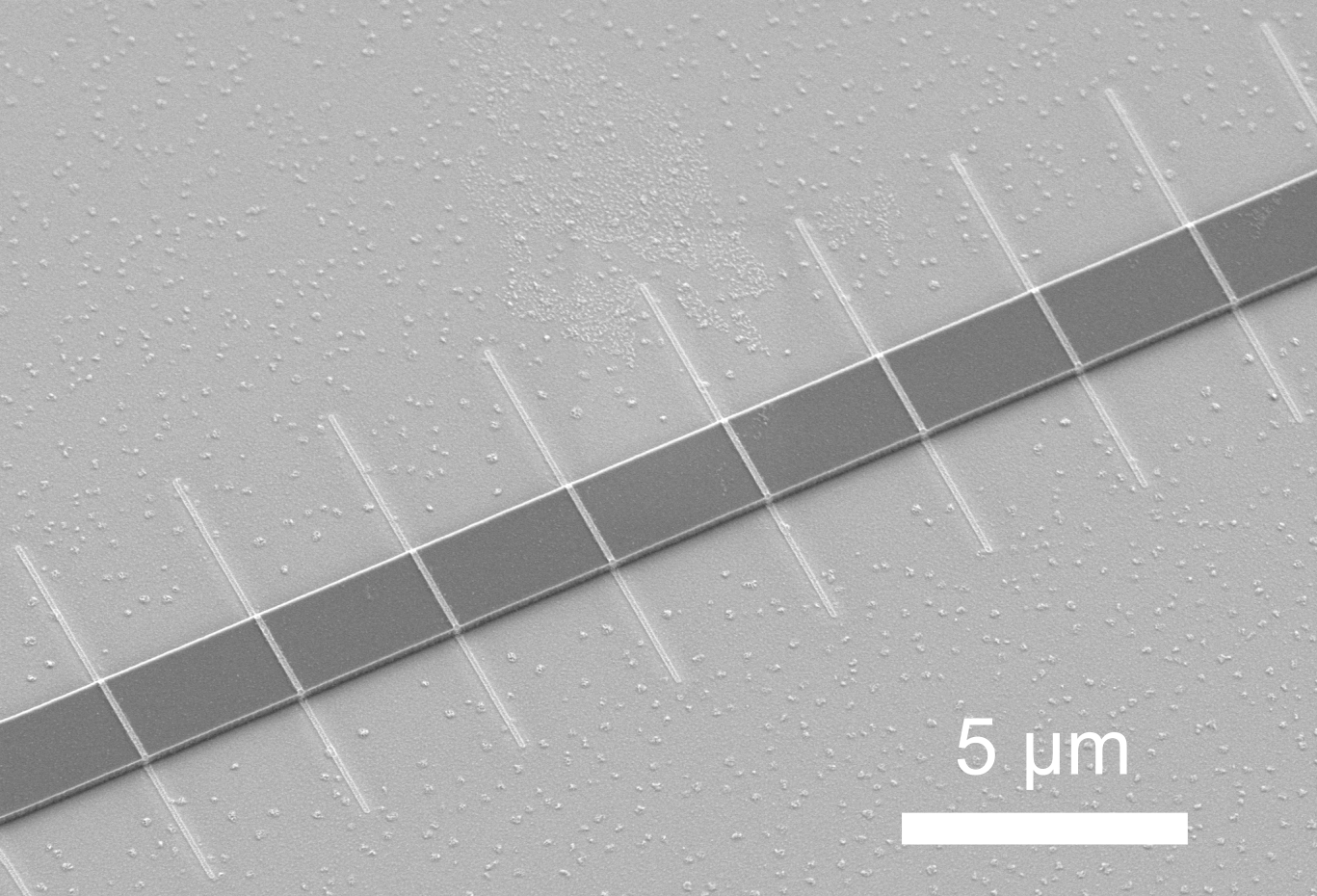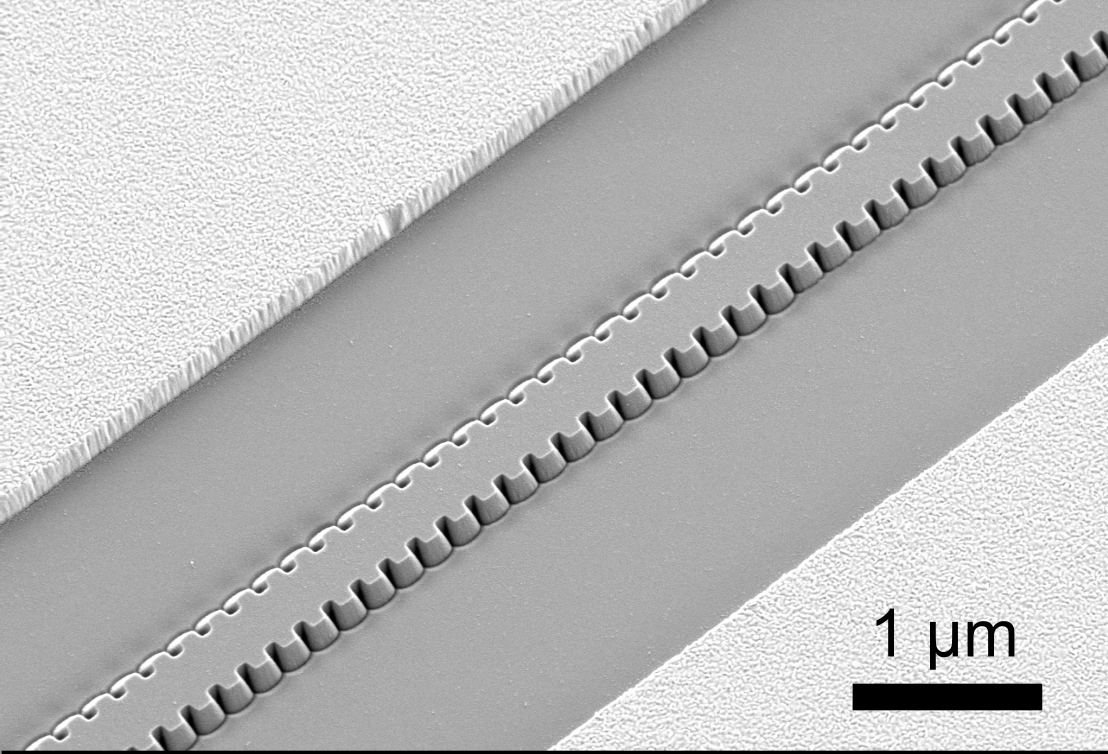Programmable Photonic Circuits
As fabrication capabilities continue to advance, increasingly complex photonic integrated circuits (PICs) can be developed. By placing metallic electrodes in the photonic circuits, we combine RF electronics and thermal control to our photonic circuits.
Lithium niobate is an ideal platform for achieving this, thanks to its electro- and thermo-optic effects. For achieving high-speed reconfigurability, the electro-optic (EO) effect is most commonly utilized for high-speed modulation beyond 67 GHz. In addition, we are investigating the thermo-optic response of PICs. By using metallic strips as thermo-optic phase shifters, we can create tunable elements such as resonators, filters, or switches. By leveraging the stable nature of the thermo-optic effect, we are striving to develop fully integrated programmable PICs for classical and quantum applications.

In the second image we fabricated metallic nanowires that could sample the evanescent field of the optical modes. Such samplers were also used in the Fourier transform spectrometer.

Finally, with other geometries such as distributed Bragg gratings we also measure electro-optic modulations with data rates larger than 50 Gbit/s.

Contact:
